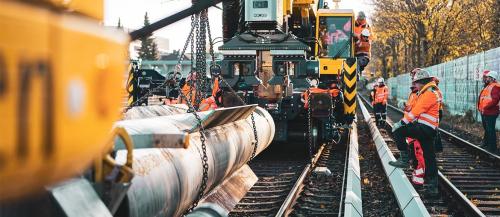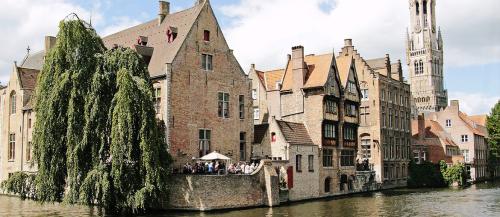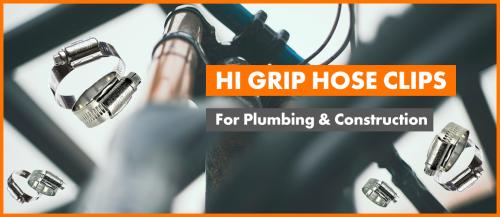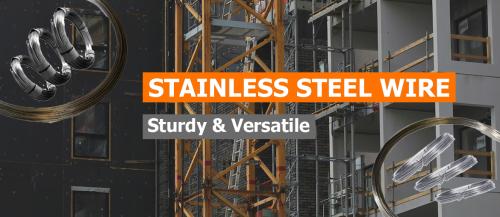Galvanised wire is most commonly used for tying and lacing purposes and is used in several industries including construction, agriculture, telecommunication, and more. In the construction industry, galvanised wire is largely used for tying reinforcement bars and insulation, but it is not limited to this, this wire type can be used for a wide range of tying needs including packaging, mesh fencing, garden work, and cables.
What is Galvanised Wire?
The majority of wire products are made from some kind of metal that has been stretched to the required diameter – a process known as drawing. Once the metal is stretched, the basic form of wire is created, known as cold wire. When the wire is in cold form, it generally needs to be treated or covered in another material to protect it against elements such as water. In some cases, metals such as steel lose their malleability during the drawing process and need to be treated through a heating or chemical process. One of these processes is galvanisation.
Galvanising is the process of coating steel or iron in zinc to protect it against corrosion, in this case, the cold wire is dipped into a hot bath of zinc or zinc oxide. Zinc has many beneficial properties that make it a fantastic coating for steel wiring. Popular metals such as steel are prone to corrosion when in contact with oxygen and water. When the oxygen molecules and iron atoms come together, they form rust on the surface of the metal, making it brittle and prone to damage. The metals need to be protected and that’s why Zinc is used. Zinc has incredible resistance to oxygen and water, and thus creates a great barrier between the wire and the elements. Galvanised wire is often a popular option as the wire is not only flexible but durable, and the Zinc coating has amazing scratch-resistant properties which provides longevity.
How Galvanised Wire Got its Name
The process of galvanising started about 300 years ago, in 1836 where French Civil Engineer Stanislas Sorel took out many patents for a technique of submerging steel into molten zinc, which developed a coating of iron. Although this is how the process of galvanisation was formed, the actual name came many years before.
Luigi Aloisio Galvani was an Italian polymath and a pioneer of bioelectromagnetics in 1780, and he had a strong interest in animal electricity, specifically in frogs. Through experimentation and dissecting frogs, he discovered the electrical basis of nerve impulses in the animal tissue. Galvani made many observations when examining frog's legs, he first found that the frog’s leg muscle twitched when coming into contact with a metal scalpel, made of copper and iron. He also had a specimen that was previously used in an electrostatic experiment, and he discovered that a scalpel pressed against the leg's exposed nerve caused it to spasm and kick out. According to Galvani, there was an electrical fluid within the nerves which he called animal electricity, but his findings were flawed.
To propose another idea to Galvani’s findings, Italian physicist Alessandro Volta suggested that it was not electrical fluid within the body that caused the twitching, but it was in fact the current passing through the metals such as the scalpel. He called this metallic electricity. Later in 1800, Volta created the world’s first battery known as Voltaic Pile, which proved his point. He stacked alternating layers of copper and zinc sheets together, separating each layer with a cloth soaked in saltwater. His experiment provided a continuous electrical current to a singular circuit.
Galvani’s and Volta’s findings had downfalls and were only partly correct, but their discoveries had a huge impact on the scientific world. The term ‘galvanism’ was coined by Volta to carry on Galvani’s legacy, to describe the muscle contraction induced by electricity. ‘Galvanism’ appeared throughout history till this day, now associated with the use of zinc as a coating for galvanic energy. And that is how galvanised wire acquired its name.
Here at BS Fixings, we are experts in galvanised wire, and we offer a wide range of top-quality wire products. If you wish to find out more information about galvanised wire or our other fixing products, please call us today on 03330 117817 and out team will be happy to assist you. You can also find our contact details on our website if you would like to get in touch by email.






